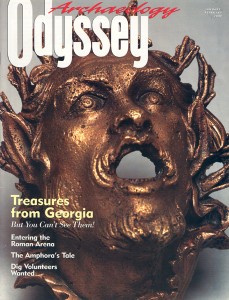The Georgian Jewish Exhibition
Sidebar to: Canceled!
Americans interested in Georgian art and culture will be missing out on more than one exhibition this autumn.
When the Shevardnadze government recently canceled the Georgian national exhibition, it also pulled the plug on a related exhibit devoted to Georgian Jewish culture. A diverse collection of more than 100 ritual objects, textiles, paintings and photographs, the Jewish exhibition was envisioned as a celebration of 2,600 years of Jewish life in the Central Asian country. It was scheduled to open at the Meridian International Center in Washington, D.C. this past October, and then to follow the main Georgian exhibit to San Diego and Houston in 2000. For now, however, most of the objects in the Jewish exhibition remain in limbo, locked away in the moldy basements of the Georgian archaeological museum.
No one is really sure when the first Jews arrived in Georgia, but local legends claim that a small group of Israelites resettled there after the Babylonians conquered Jerusalem and destroyed the Temple in 586 B.C. A second wave of Jewish immigrants is said to have arrived after the Roman destruction of the Second Temple in 70 A.D. Since that time, the size of Georgia’s Jewish population has waxed and waned (ranging anywhere from 10,000 to 30,000 people in recent years); but relations between the country’s Christians and Jews have remained harmonious throughout the centuries.
After Christianity was adopted as the official religion of the country in the fourth century A.D., Georgia’s Jews continued to enjoy most of the same legal rights and privileges as non-Jews. They were, for example, permitted to own serfs during the Middle Ages. (There are even a few recorded cases of Jews owning Christians!)
Already a library member? Log in here.
Institution user? Log in with your IP address.

